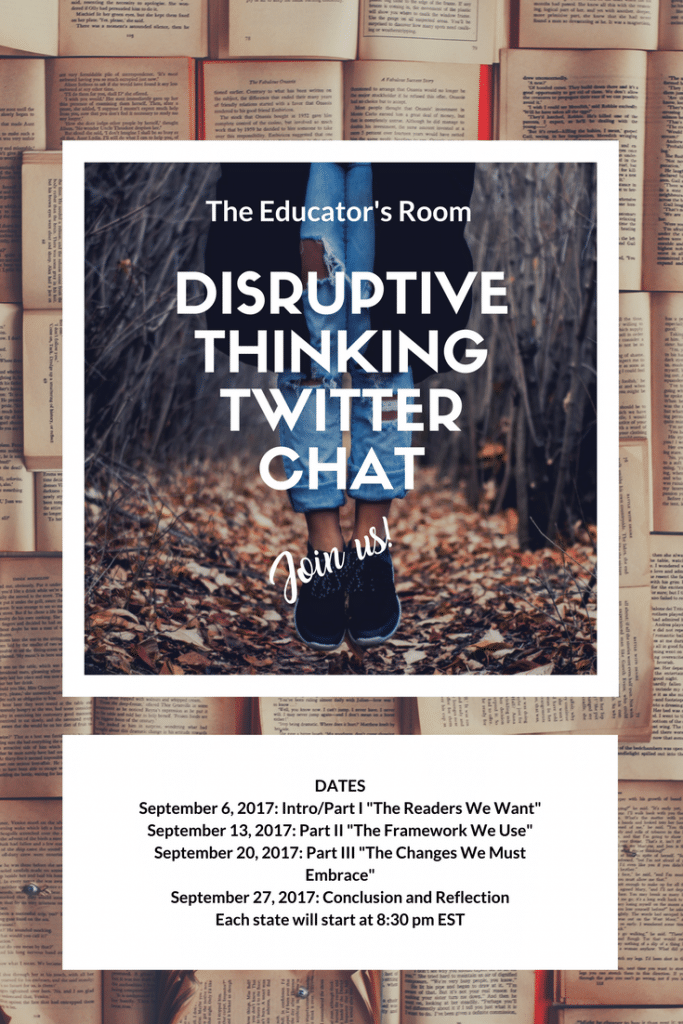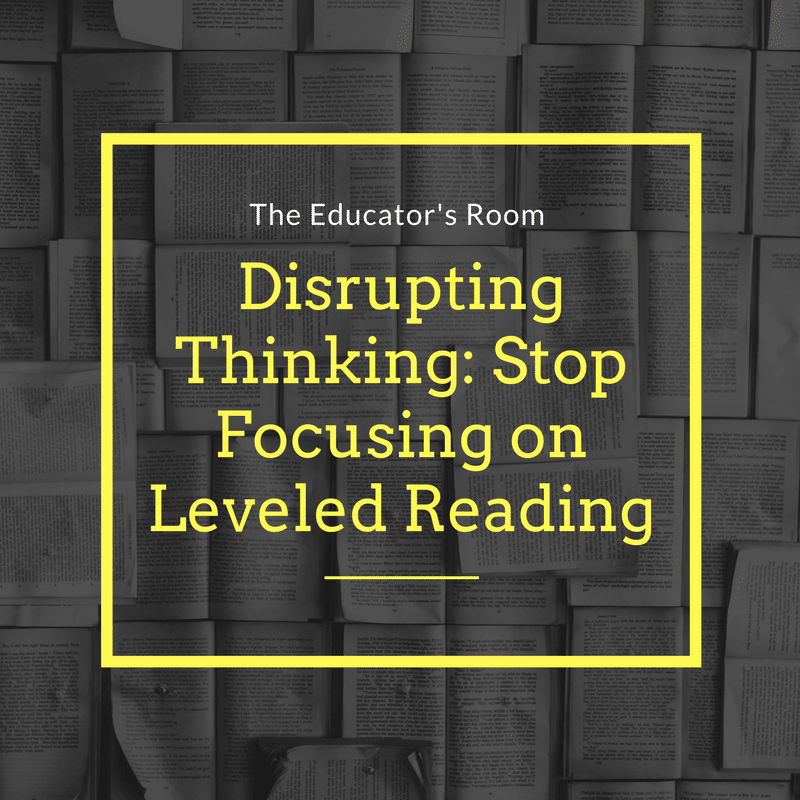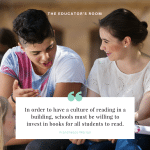Each summer I try to squeeze at least a couple professional books into my summer reading pile. This year, I knew I wanted to read Kylene Beers and Robert E Probst’s new book, Disrupting Thinking: Why How We Read Matters.
Teaching my 8th graders not just to read, but to love to read has been my main goal. I have instinctively known (and confirmed with research and data) that if they read more, they would read better, and all the things like test scores and whatever else the people in charge deem important would follow.
I eagerly devour any research that supports this practice of letting kids choose what they read and letting them read often. Of course giving students access to books and time to read is just the first part of the equation. We also have to help students learn how to read. Beers and Probst devote the first section of Disrupting Thinking to the types of readers we want: responsive, responsible, and compassionate.
The next section of the book focuses on the framework Beers and Probst developed for creating responsive, responsible, and compassionate readers: Book, Head, Heart. This framework resonated with me because it is essentially Reader Response Theory which I model almost all of my teaching of reading around.
The final section is where the real disruption of thinking comes in: The Changes We Must Embrace. Here Beers and Probst acknowledge that ambiguous thing we teachers like to call “Best Practices” and call out how we readily ignore research and continue to do what has been proven to actually not be the “best” such as teaching whole class novels and leveling student readers. Rather than focusing on engagement with texts of choice, we look for signs of success in Lexile and state test scores rather than focusing on creating passionate, lifelong learners.
That is not to say we throw out knowing what reading level our students are. As Beers and Probst point out, when we teach a skill, we want kids to practice at their instructional level. However, if we limit students to only getting to read at their instructional level, we squash real choice and make the mistake of defining students by their level.
[bctt tweet=”If we limit students to only getting to read at their instructional level, we squash real choice ” username=””]
As Donalyn Miller has repeatedly pointed out in her research, there are definite problems in defining students by Lexile Levels. For instance Ray Bradbury’s novel, Fahrenheit 451 falls in the same Lexile band as the Wimpy Kid books by Jeff Kinney (Miller 2012). My eight-year-old reads Wimpy Kid books, but Ray Bradbury is not usually taught until high school. When schools require students to only choose from their Lexile band, students are limited by an arbitrary vocabulary-level rather than content that interests them.
Students confined to reading levels begin to see themselves as a level rather than a reader, and any love for reading becomes squashed (Beers & Probst 2017). I would argue then, that it is impossible to hand a student a text at their level–one they did not choose–and create a responsive, responsible, compassionate reader. It is impossible to spark critical thinking when students see the goal of reading as achieving the next level, not thinking about ideas.
[bctt tweet=”Students confined to reading levels begin to see themselves as a level rather than a reader, and any love for reading becomes squashed” username=””]
As an ELA teacher, I really loved Beers and Probst’s book, but I think the best part is that it’s not just for ELA teachers. Many teachers look at a student’s reading level and pigeonhole them according to that. We need to be helping our students practice at their level, yes, but then allow them the choice to read at, below, and above their level based on what they are interested in. While I think it’s easiest to apply this to literature, if we truly are building tomorrow’s leaders, this applies to all types of reading across the curriculum.
————-
If you’ve read Disrupting Thinking or you would like to, I am going to hold a series of Twitter chats on Wednesdays in September from 8:30-9pm EST to discuss using the #TERChat hashtag. This will be our reading/discussion schedule:
September 6: Intro/Part I “The Readers We Want”
September 13: Part II “The Framework We Use”
September 20: Part III “The Changes We Must Embrace”
September 27: Conclusion and Reflection
Hope to chat with you!
————–
References:
Beers, G. K., & Probst, R. E. (2017). Disrupting thinking: why how we read matters. New York, NY: Scholastic Inc.
Miller, D. (2012, July 26). Guess My Lexile. Retrieved August 03, 2017, from http://blogs.edweek.org/teachers/book_whisperer/2012/07/guess_my_lexile.html








Beware Grade-Level Reading and the Cult of Proficiency https://radicalscholarship.wordpress.com/2015/05/24/beware-grade-level-reading-and-the-cult-of-proficiency/